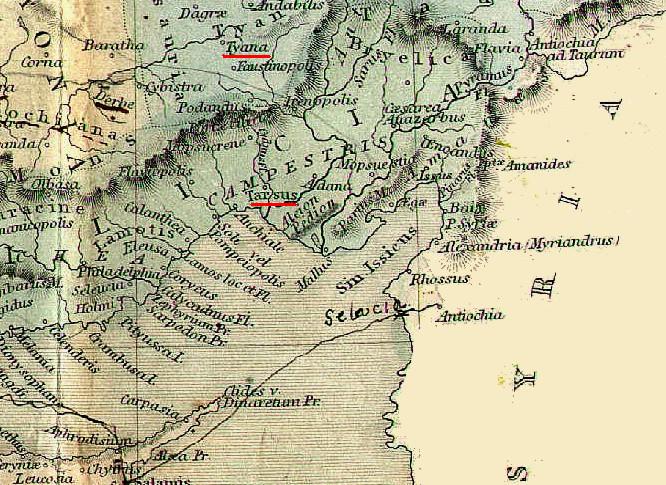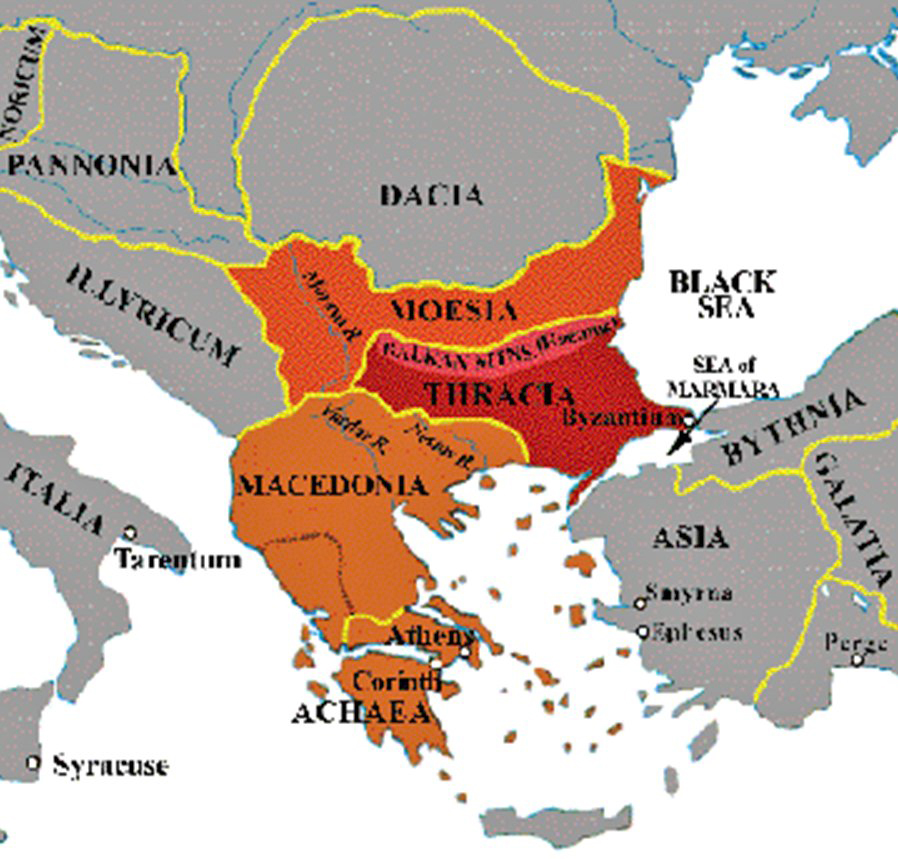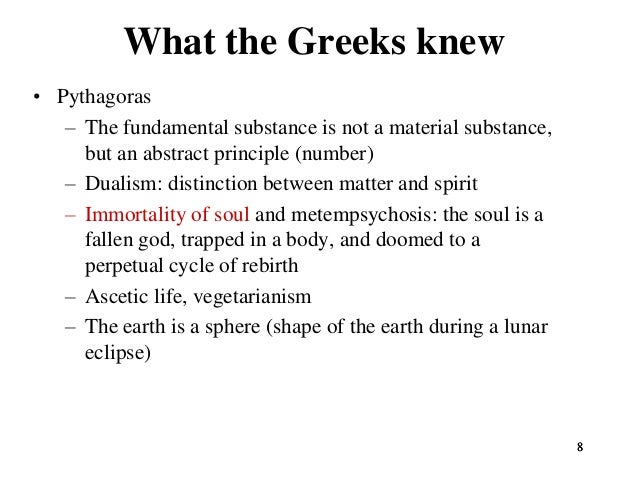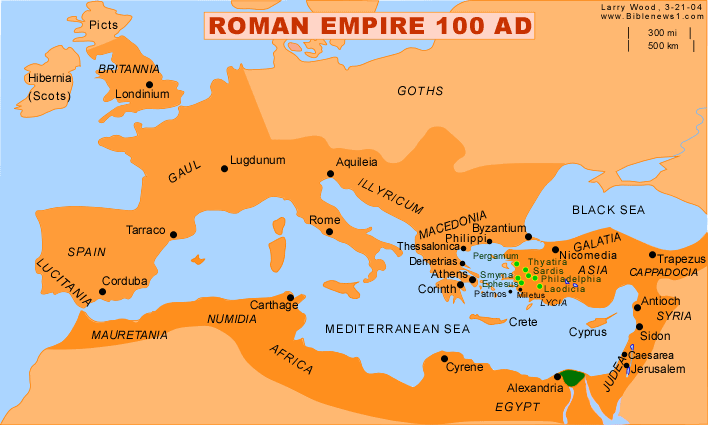The Christ myth theory is the hypothesis that Jesus never existed, or, if he did, had virtually nothing to do with the founding of Christianity and the accounts in the gospels.
Note:
(1) there are no non-Christian references to Jesus dating back to the first century.*
(2) Jesus originated from pagan or mythical roots.
[* People argue that Josephus documented Jesus Christ on two occasions in his histories. Arguments against this are: (a) these references could have been added later by Roman scribes under order of a Roman Pope, (b) it is acknowledged by many that Josephus was a puppet of the Roman establishment.]
18th century French academics: Volney and Dupuis argued that Christianity was an amalgamation of various ancient mythologies and that Jesus was a totally mythical character.
19th century German Bruno Bauer, who taught at the University of Bonn, took Strauss' arguments further and became the first author to systematically argue that Jesus did not exist:
1. The gospels were written many decades or even a century after Jesus' estimated year of death, by individuals who likely never met Jesus, and then were edited or forged over the centuries by unknown scribes with their own agendas.
2. There are no surviving historic records about Jesus of Nazareth from any non-Jewish author until the second century, and Jesus left no writings or other archaeological evidence.
3. Certain gospel stories are similar to those of dying-and-rising gods, demigods (sons of gods), solar deities, saviors or other divine men such as Horus, Mithra/Mithras, Prometheus, Dionysus, Osiris, Buddha, and Krishna, as well as Christ-like historical figures like Apollonius of Tyana.
in 1877 in Christ and the Caesars [Bauer] suggested that Christianity was a synthesis of the Stoicism of Seneca the Younger and of the Jewish theology of Philo as developed by pro-Roman Jews such as Josephus.
19th century English academic Godfrey Higgins claims, "the mythos of the Hindus, the mythos of the Jews and the mythos of the Greeks are all at bottom the same; and ... are contrivances under the appearance of histories to perpetuate doctrines,"and that Christian editors “either from roguery or folly, corrupted them all.” (1836)
20th century academics found sources for Christian ideas in Greek and Oriental mystery cults, rather than Judaism. Joseph Klausner wrote that biblical scholars "tried their hardest to find in the historic Jesus something which is not Judaism; but in his actual history they have found nothing of this whatever, since this history is reduced almost to zero.
In 1900, Scottish MP John Mackinnon Robertson argued that Jesus never existed but was an invention by a first-century messianic cult. In Robertson's view, religious groups invent new gods to fit the needs of the society of the time. Robertson argued that a solar deity symbolized by the lamb and the ram had been worshiped by an Israelite cult of Joshua for long and that this cult had then invented a new messianic figure, Jesus of Nazareth. Robertson argued that a possible source for the Christian myth may have been the Talmudic story of the executed Jesus Pandera which dates to 100 BCE.
In 1927, British philosopher Bertrand Russell stated in his lecture Why I Am Not a Christian that "historically it is quite doubtful that Jesus existed, and if he did we do not know anything about him..."
The British archaeologist and philologist John M. Allegro later argued in 1970 that Christianity began as a shamanistic cult.
Mark Hall writes that Allegro suggested the Dead Sea Scrolls all but proved that a historical Jesus never existed.
English professor of German George Albert Wells had a profound impact on the Christ myth theory; according to New Testament scholar Graham Stanton, Wells presented the most thoroughgoing and sophisticated arguments for the Christ myth theory in his books The Jesus of the Early Christians (1971), Did Jesus Exist? (1975), The Historical Evidence for Jesus (1982), The Jesus Legend (1996), The Jesus Myth (1999), Can We Trust the New Testament? (2004), and Cutting Jesus Down to Size (2009). British theologian Kenneth Grayston advised Christians to acknowledge the difficulties raised by Wells.
Wells presented his key arguments in his initial trilogy (1971, 1975, 1982), based on the views of New Testament scholars who acknowledge that the gospels are sources written decades after Jesus's death by people who had no personal knowledge of him. In addition, Wells writes, the texts are exclusively Christian and theologically motivated, and therefore a rational person should believe the gospels only if they are independently confirmed. Wells also argues that Paul and the other epistle writers—the earliest Christian writers—do not provide any support for the idea that Jesus lived early in the 1st century. There is no information in them about Jesus's parents, place of birth, teachings, trial, nor crucifixion.[90] For Wells, the Jesus of the early Christians was a pure myth, derived from mystical speculations stemming from the Jewish Wisdom tradition, while the Gospels were subsequent works of historical fiction.
Wells: The story of the execution of Jesus under Pilate is not an historical account.
21st century Richard Carrier notes, "The hypothesis that Jesus never really existed has started to gain more credibility in the expert community. Some now agree historicity agnosticism is warranted, including Arthur Droge (professor of early Christianity at UCSD), Kurt Noll (associate professor of religion at Brandon University), and Thomas Thompson (professor of theology, emeritus, at the University of Copenhagen). Others are even more certain historicity is doubtful, including Thomas Brodie (director emeritus of the Dominican Biblical Centre at the University of Limerick, Ireland), Robert Price (who has two Ph.D.’s from Drew University, in theology and New Testament studies)," and more recently Hector Avalos professor of Religious Studies and Raphael Lataster doctoral candidate of Religious Studies at the University of Sydney.
Canadian author Tom Harpur dedicated his 2004 book The Pagan Christ to Kuhn, calling him "a man of immense learning and even greater courage" and “one of the single greatest geniuses of the twentieth century.” Harpur suggests Kuhn has not received the attention he deserves since many of his works were self-published.[109]
Presenting the case that the gospels re-work ancient pagan myths, Harpur builds on Alvin Boyd Kuhn when listing similarities among the stories of Jesus, Horus, Mithras, Buddha and others. According to Harpur, in the second or third centuries, the early church created the fictional impression of a literal and historic Jesus and then used forgery and violence to cover up the evidence. Having come to see the scriptures as symbolic allegory of a cosmic truth rather than as inconsistent history, Harpur concludes he has a greater internal connection with the spirit of Christ.
Thomas L. Thompson, Professor emeritus at the University of Copenhagen is the author of a number of books critical of the historicity of the Old Testament. Thompson claims that his PhD dissertation at University of Tübingen on the quest for the historical Abraham was rejected by his examiner Joseph Ratzinger (later Pope Benedict XVI) since it went against Catholic theology.[112] He was invited to finish his degree at Temple University in Philadelphia where he received his PhD summa cum laude. In his book The Messiah Myth: The Near Eastern Roots of Jesus and David, Thompson argues that the biblical accounts of both King David and Jesus of Nazareth are mythical in nature and based on Mesopotamian, Egyptian, Babylonian, and Greek and Roman literature. For example, he argues that the resurrection of Jesus is taken directly from the story of the dying and rising god, Dionysus.
In 2012, the Irish Dominican priest and theologian Thomas L. Brodie, holding a PhD from the Pontifical University of St. Thomas Aquinas in Rome and a co-founder and former director of the Dominican Biblical Institute in Limerick, published "Beyond the Quest for the Historical Jesus: Memoir of a Discovery". In this book, Brodie, who previously had published academic works on the Hebrew prophets, argued that the gospels are essentially a rewriting of the stories of Elijah and Elisha when viewed as a unified account in the Books of Kings. This view lead Brodie to the conclusion that Jesus is mythical... Brodie then views the Elijah–Elisha story as the underlying model for the gospel narratives.
In early 2013, it was reported that the Dominican order had forced Brodie to resign his teaching job and banned him from writing and lecturing while under investigation for disputed teaching. The Dominican order disputed the story and stated that Brodie had already performed three terms as director at the institute and was not intending to serve a fourth, but that the book would be reviewed by a committee of scholars within the Irish Dominicans. The institute's website indicates the investigation is ongoing. The Dominican Biblical Institute closed in 2015. [Really? Very suspicious. Supression of the truth?]
Gerard Norton said: "Brodie's core conviction' [is] that neither Jesus nor Paul of Tarsus were historical.
Canadian writer Earl Doherty wrote in 2009 that the Christ myth theory is "the theory that no historical Jesus worthy of the name existed... [Doherty]: Jesus originated as a myth derived from Middle Platonism with some influence from Jewish mysticism, and that belief in a historical Jesus emerged only among Christian communities in the 2nd century.
Doherty suggests that the early Christian writers describe a Christian movement grounded in Platonic philosophy and Hellenistic Judaism, reaching the worship of a monotheistic Jewish god and what he calls a "logos-type Son". Doherty further argues that Theophilus of Antioch (c. 163–182), Athenagoras of Athens (c. 133–190), Tatian the Assyrian (c. 120–180), and Marcus Minucius Felix (writing around 150–270) offer no indication that they believed in a historical figure crucified and resurrected, and that the name Jesus does not appear in any of them.
American New Testament scholar and former Baptist pastor Robert McNair Price [said] the Christian image of Christ is a theological construct into which traces of Jesus of Nazareth have been woven... Price believes that Christianity is a historicized synthesis of mainly Egyptian, Jewish, and Greek mythologies.
Price writes that everyone who espouses the Christ myth theory bases their arguments on three key points:
1. There is no mention of a miracle-working Jesus in secular sources.
2. The epistles, written earlier than the gospels, provide no evidence of a recent historical Jesus
3. The Jesus narrative is paralleled in Middle Eastern myths about dying and rising gods; Price names Baal, Osiris, Attis, Adonis, and Dumuzi/Tammuz as examples, all of which, he writes, survived into the Hellenistic and Roman periods.
Price argues that if critical methodology is applied with ruthless consistency, one is left in complete agnosticism regarding Jesus's historicity: "There might have been a historical Jesus, but unless someone discovers his diary or his skeleton, we'll never know."[124] Price argues that "the varying dates are the residue of various attempts to anchor an originally mythic or legendary Jesus in more or less recent history."
Jesus simply wears too many hats in the Gospels—exorcist, healer, king, prophet, sage, rabbi, demigod, and so on. The Jesus Christ of the New Testament is a composite figure (...) The historical Jesus (if there was one) might well have been a messianic king, or a progressive Pharisee, or a Galilean shaman, or a magus, or a Hellenistic sage... Price cautiously asserts that "a genuine historical figure" may ultimately lie at the root of the Christian religion. That figure would have eventually been made into God through apotheosis [ "to deify" - the glorification of a subject to divine level].
Price also states "I am not trying to say that there was a single origin of the Christian savior Jesus Christ... there may indeed have been such a myth [or actual historic personage], and that if so, it eventually flowed together with other [saviour] images, some one of which may have been based on a historical [individual]."
+ + +
Christ myth theory proponents claim that the age, authorship, and authenticity of the Gospels can not be verified, thus the Gospels can not bear witness to the historicity of Jesus.
There remains a strong consensus in historical-critical biblical scholarship that a historical Jesus did live in the geographical area and the time period noted in the bible.
[The opposite point of view in academia is rigorously defended]:
According to New Testament scholar Bart D. Ehrman, most people who study the historical period of Jesus believe that he did exist, and do not write in support of the Christ myth theory. Ehrman also notes that these views would prevent one from getting employment in a religious studies department:
"These views are so extreme and so unconvincing to 99.99 percent of the real experts that anyone holding them is as likely to get a teaching job in an established department of religion as a six-day creationist is likely to land on in a bona fide department of biology."
[Red flags right there! ie: Tell everbody you believe Jesus existed, or you lose your job!]
Maurice Casey, theologian and scholar of New Testament and early Christianity, stated that the belief among professors that Jesus existed is generally completely certain. According to Casey, the view that Jesus did not exist is "the view of extremists" and "demonstrably false", and that "professional scholars generally regard it as having been settled in serious scholarship long ago".
[In spite of the fact that archaology can't find "Jesus"!]
Documentaries
Since 2005, several English-language documentaries have focused, at least in part, on the Christ myth theory:
- The God Who Wasn't There directed by Brian Flemming and featuring Richard Carrier and Robert M. Price (2005)
- The Pagan Christ produced by the Canadian Broadcasting Corporation and featuring Tom Harpur (2007)
- Zeitgeist: The Movie directed by Peter Joseph (2007)
- The Hidden Story of Jesus produced by Channel 4 and featuring Robert Beckford (2007)
- Religulous directed by Larry Charles and featuring Bill Maher (2008)
- Caesar's Messiah by Joseph Atwill (2013)
Additionally:
There is an
extensive bibliography available on this Wiki link.









-cropped-2.png)


















